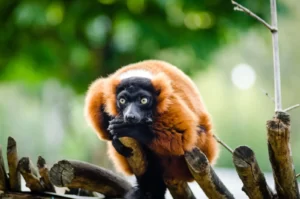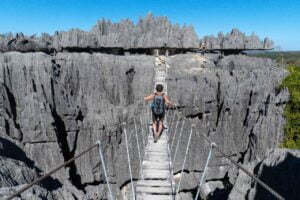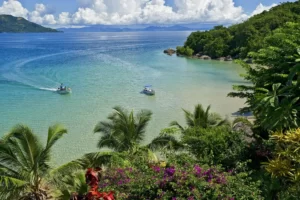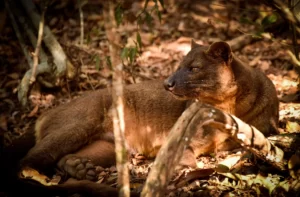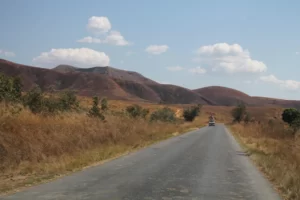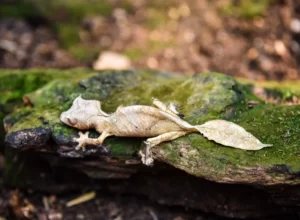Madagascar, the world’s fourth-largest island, is often referred to as the « Eighth Continent » due to its incredible biodiversity and unique ecosystems. For nature lovers, Madagascar tourism offers an unparalleled experience, showcasing diverse wildlife, breathtaking landscapes, and rich cultural heritage. Why Madagascar is a must-visit destination for those who cherish nature and adventure ?
The Unique Biodiversity of Madagascar
Endemic Species
Madagascar is home to thousands of plant and animal species that are found nowhere else on Earth. The island’s isolation has led to the evolution of unique species, making it a biodiversity hotspot. Among the most famous are the lemurs, with over 100 different species and subspecies. Additionally, Madagascar is known for its vibrant chameleons, strikingly colorful frogs, and unusual insects.
Lemurs: The Stars of Madagascar
Lemurs are synonymous with Madagascar tourism. These primates, ranging from the tiny mouse lemur to the large indri, are fascinating to observe in their natural habitat. The Andasibe-Mantadia National Park is one of the best places to see these creatures, offering visitors a chance to witness their playful behavior and hear their distinctive calls.
Spectacular Landscapes
Avenue of the Baobabs
One of the most iconic sights in Madagascar is the Avenue of the Baobabs. These towering trees, some of which are over 800 years old, create a surreal landscape that is perfect for photography and sunset viewing. The baobabs are not only a symbol of the island’s natural beauty but also a testament to its ancient heritage.
Tsingy de Bemaraha
The Tsingy de Bemaraha National Park is a UNESCO World Heritage site known for its dramatic limestone formations. The « tsingy, » which means « walking on tiptoes » in Malagasy, are razor-sharp pinnacles that create a labyrinthine landscape. Visitors can explore this unique terrain via a network of suspension bridges, walkways, and hiking trails.
Rich Marine Life
Coral Reefs and Marine Reserves
Madagascar’s coastline is fringed with coral reefs that are teeming with marine life. Nosy Be, an island off the northwest coast, is a popular destination for snorkeling and diving. The marine reserves around Nosy Be protect a variety of species, including sea turtles, dolphins, and an array of colorful fish.
Whale Watching
From June to November, the waters around Madagascar become a playground for humpback whales. These majestic creatures migrate to the warm Indian Ocean waters to breed and give birth. Whale watching tours, particularly around the island of Sainte Marie, offer an unforgettable experience as visitors witness the acrobatic displays of these gentle giants.
Cultural Richness
Traditional Villages and Local Communities
Madagascar tourism is not just about nature; it’s also about experiencing the island’s rich cultural heritage. Traditional villages offer a glimpse into the daily lives of the Malagasy people. Visitors can learn about local customs, traditional crafts, and enjoy the warm hospitality of the island’s inhabitants.
Festivals and Celebrations
Madagascar hosts numerous festivals throughout the year, celebrating everything from music and dance to traditional rituals. The Famadihana, or « turning of the bones, » is a unique ceremony where families exhume their ancestors’ remains, rewrap them in fresh cloth, and dance with them. This ritual underscores the deep respect Malagasy people have for their ancestors.
Adventure Activities
Hiking and Trekking
For those who love outdoor activities, Madagascar offers numerous opportunities for hiking and trekking. The Andringitra National Park is a prime destination for trekkers, with trails leading to the island’s highest peaks. The park’s diverse ecosystems range from tropical forests to high-altitude meadows, providing a rich experience for nature enthusiasts.
Kayaking and Canoeing
Exploring Madagascar’s rivers and lakes by kayak or canoe is a fantastic way to see the island from a different perspective. The Pangalanes Canal, a series of artificial and natural waterways, is perfect for such adventures. Paddling through these serene waters, visitors can enjoy the lush landscapes and spot a variety of bird species.
Sustainable Tourism in Madagascar
Conservation Efforts
Madagascar tourism heavily emphasizes conservation and sustainability. Many tour operators, including Calm Adventure Tours, are committed to protecting the island’s unique ecosystems. They work closely with local communities and conservation organizations to promote eco-friendly practices and ensure that tourism benefits both nature and people.
Supporting Local Communities
Choosing responsible tour operators helps support local communities. By participating in community-based tourism, visitors contribute to the local economy and help preserve traditional ways of life. This sustainable approach ensures that future generations can continue to enjoy Madagascar’s natural and cultural treasures.
Madagascar tourism offers an unparalleled adventure for nature lovers, with its unique wildlife, stunning landscapes, and rich cultural heritage. From the endemic species and iconic baobabs to the vibrant marine life and traditional festivals, there is something for everyone on this extraordinary island. By choosing responsible tourism practices, visitors can enjoy these wonders while helping to protect and preserve Madagascar for future generations.

